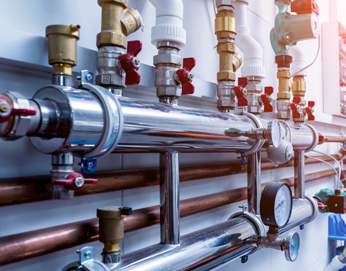We’re always seeing questions about
circulation heaters. Specifically, given the abundance of different models and types, customers want to know which works best for their application. That can be a complicated question. In fact, it’s a question that can’t be answered responsibly without several factors being taken into consideration. There are six common points that should be considered when specifying a circulation heater for an application:
Application ConditionsThere are many different applications where circulation heaters can be used. Each application will have process requirements that must be addressed. The heaters need to be engineered to handle specific conditions such as minimum and maximum operating temperatures, flow rates, and operating pressures. Chemical compositions, viscosity, thermal properties, and the corrosive nature of the heated media must be understood. These along with other conditions all impact the best design of the heater.
CompositionThe material the heater is constructed with is critical to the integrity and life of the heater. The media’s chemical composition and corrosiveness must be understood and adjusted for with the overall heater design.
Watt DensityWhat are you heating and how hot does the heater need to get? The operating temperature of the element is a critical consideration for both heat transfer efficiency and lifespan. The wattage requirements need to be calculated to ensure a safe operating element-sheath temperature and fluid integrity.
Heater OrientationA circulation heater can be oriented horizontally or vertically. There are some best practices for each orientation. For example, for liquids orient the heater horizontally with the inlet and outlet pipes pointing up or vertically with the terminal enclosure at the top and the inlet pipe at the bottom. For air or gases orient the heater horizontally with the inlet nozzle closest to the terminal enclosure or vertically with the inlet and the terminal enclosure at the bottom.
Standoffs and Terminal EnclosuresA good design will account for all factors that can generate heat in the terminal enclosure. For example, the heater flange can conduct heat to the terminal enclosure. In certain cases, a standoff between the heater flange and the terminal enclosure is necessary to reduce the temperature in the terminal enclosure. There are other factors that can contribute to excess heat in the terminal enclosure which is why it is important to thoroughly understand all the heat generation points for a more reliable design.
ControlsLastly, the proper control system needs to be selected to ensure safe, reliable, and accurate control of the heater and your system. Precise control can mean everything in terms of optimizing a process, reducing scrap and ultimately saving money. What kind of control does your application need? We’ll need to investigate.
If you want to learn more about these factors and the specifying process, check out our article published in
Process Heating Magazine.
Fill out our
circulation heating application form and we will have one of our process heating experts contact you, or call
(855) 737-4718 to speak to one of our experts immediately.
